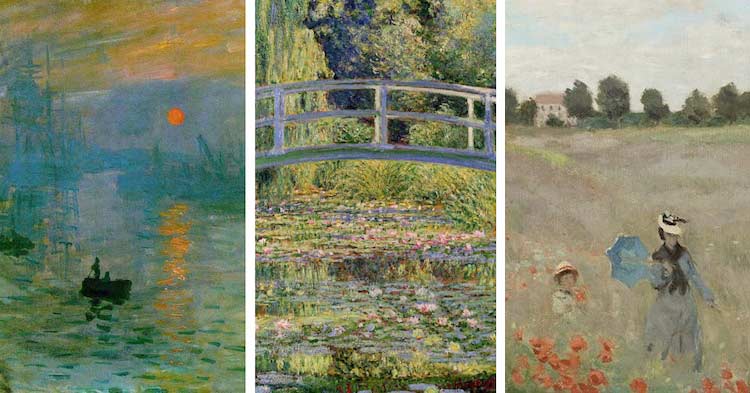Education young generation on Impressionism particularly through Claude Monet art is a way opening up that transformative experience In art. For an art teacher offering children an opportunity to experience the basic concept of Impressionism to understand not only the practical aspect but the message of the style is a great pleasure.In this class, the children get to learn about Monet, the founder of the Impressionist movement, and prompted them to find out how Monet applied reflection on his paintings in his water lilies and landscapes. them understand not only technique but also the beauty of capturing a fleeting moment. This class introduces kids to Monet, one of the founding figures of the Impressionist movement, and encourages them to explore his unique techniques, especially the use of reflection in his iconic water lilies and landscape scenes.
Why Teach Children About Impressionism?
It is very important to familiarise children with art works and the development of the styles of a particular period with Monet’s work as being a great place to start for the introduction of Impressionism. Impressionism, the art movement with which Monet is associated and called the “Father of,” permits an individual freely express himself instead of painting an object of nature realistically. His creations show students how colors, light and the shadows coalesce to help the viewer perceive a particular moment of time. If I were to explain what student learn in the Monet class it will be that Monet did not paint details but rather painted impressions of something Monet, who is often celebrated as the “Father of Impressionism,” developed techniques that allow for personal expression rather than strict realism. His works demonstrate how colors, light, and shadows come together to depict an instant in time, inspiring students to see the world through a new lens.
In our Monet-inspired class, students learn that Impressionism is not about precise details; rather, it’s about the impression of a scene. By this approach, children are relieved of the strain of getting it right hence giving them a chance to actually create whatever they have in mind with the help of brush and colors.

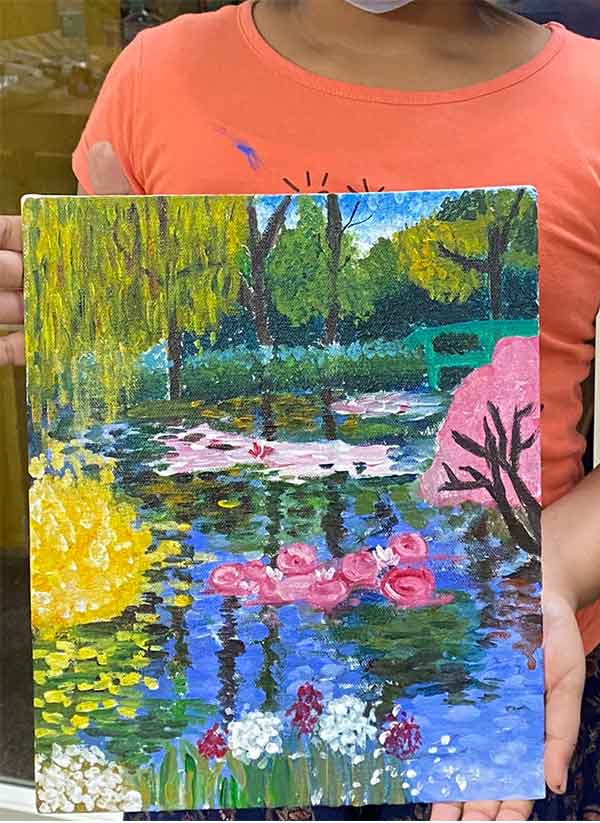
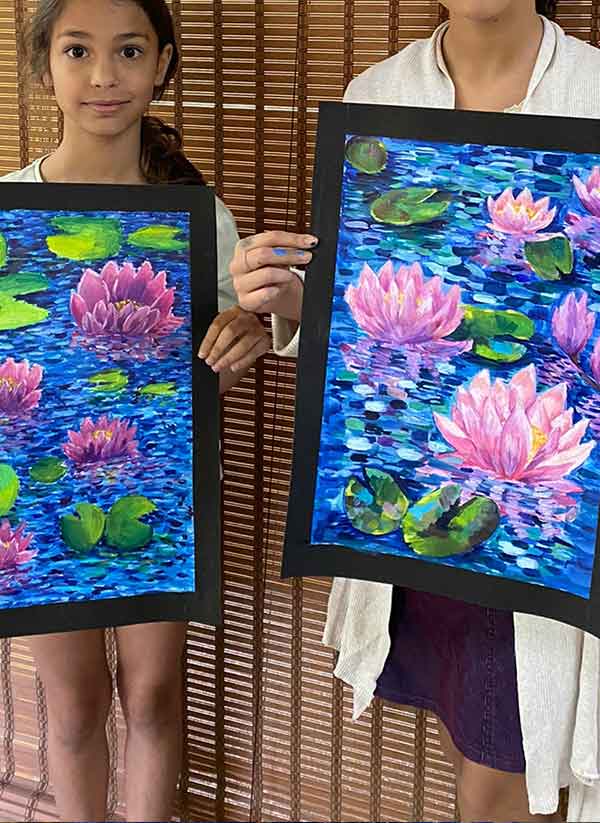
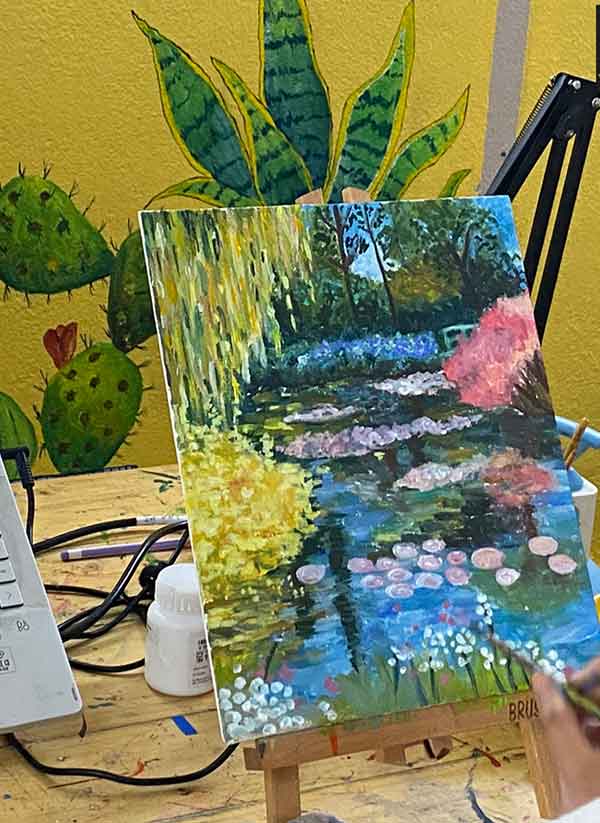
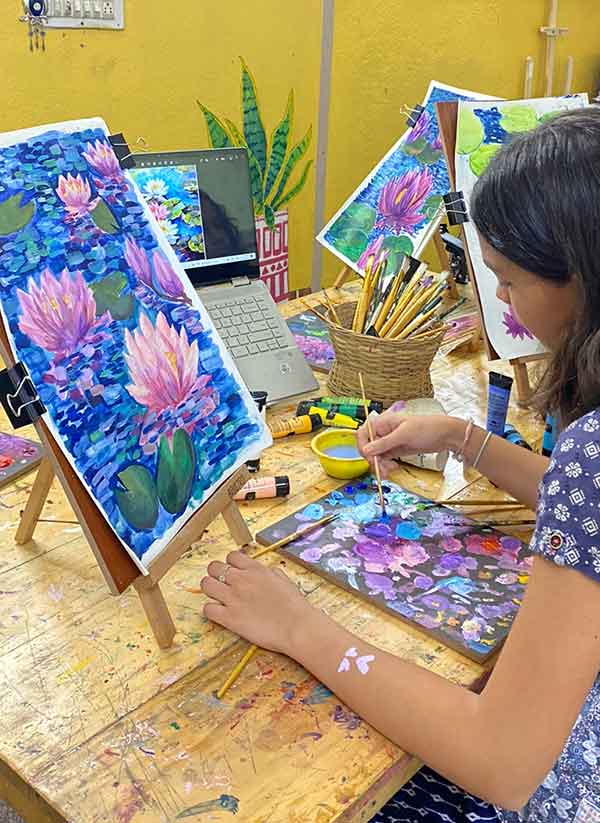
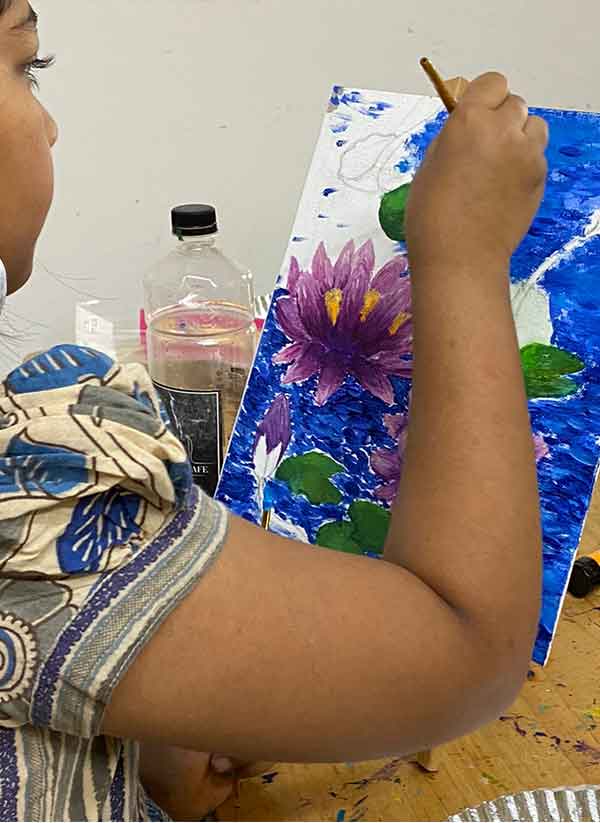
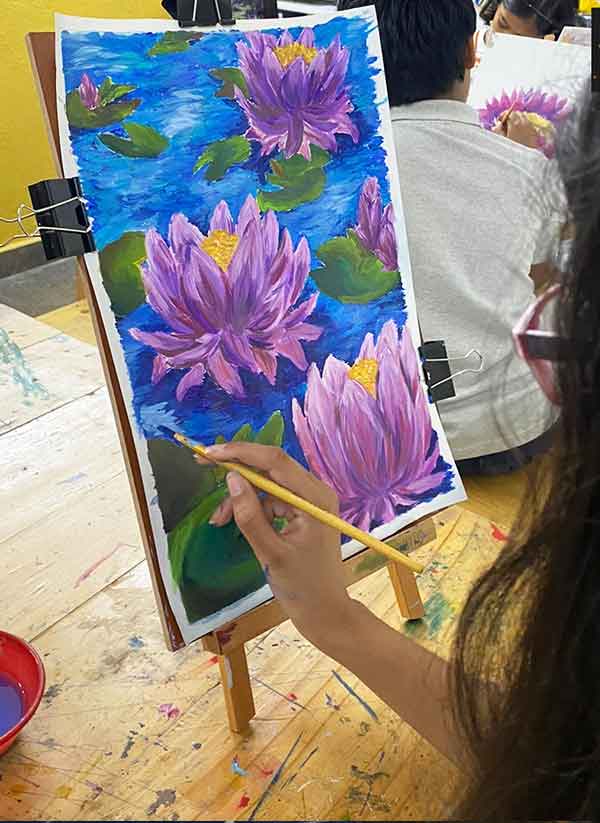
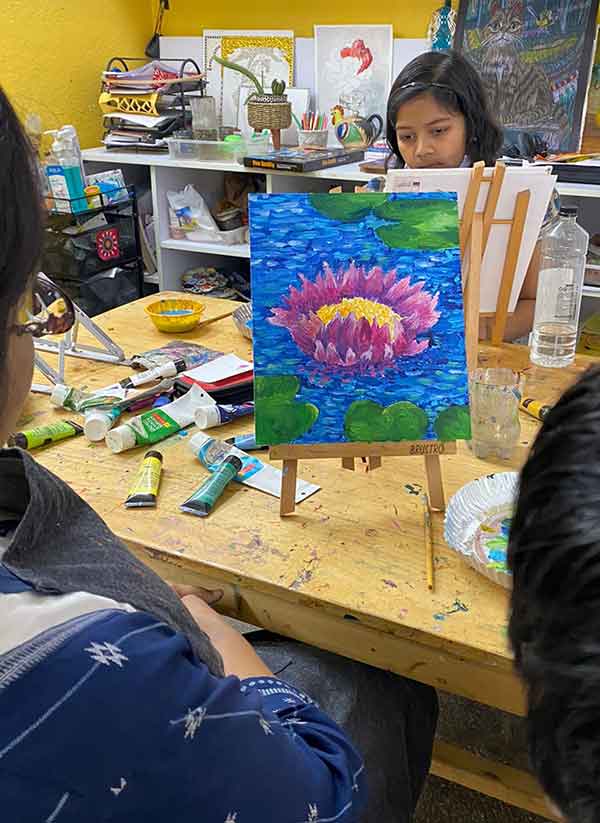
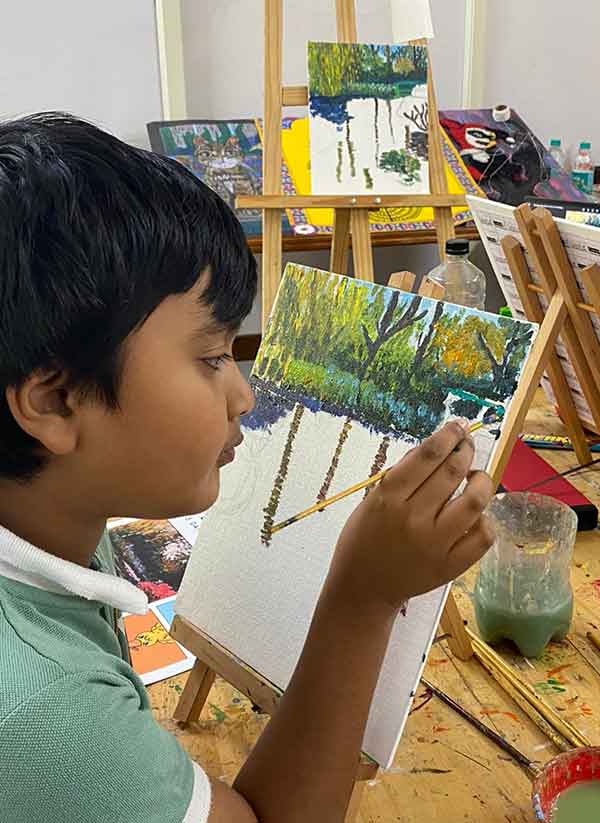
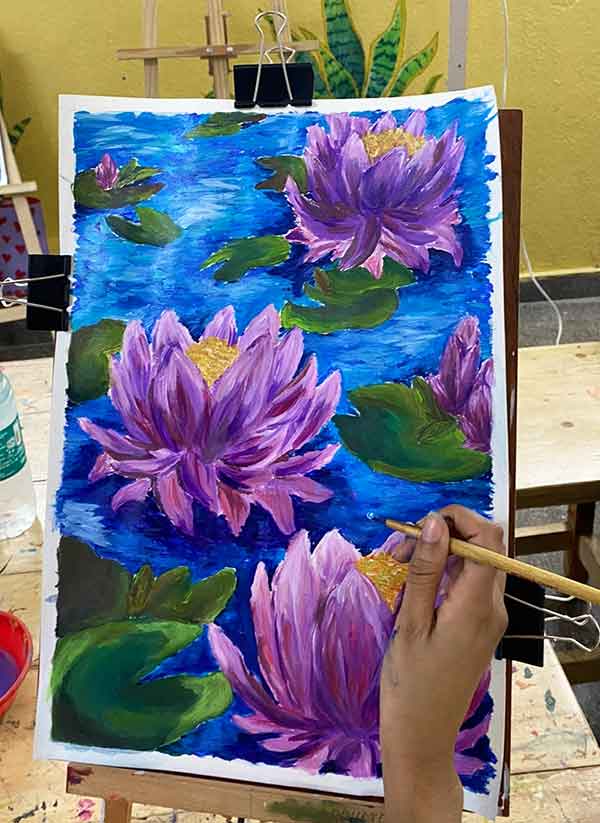
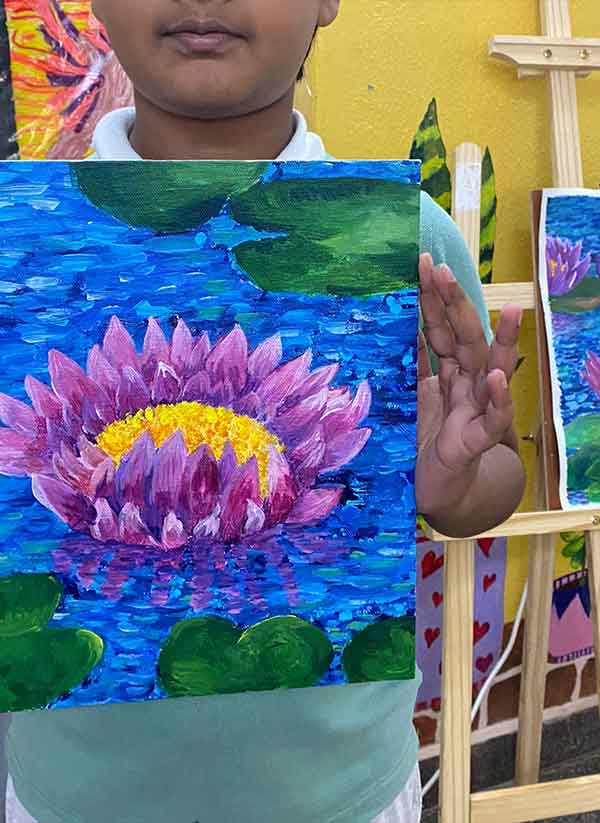
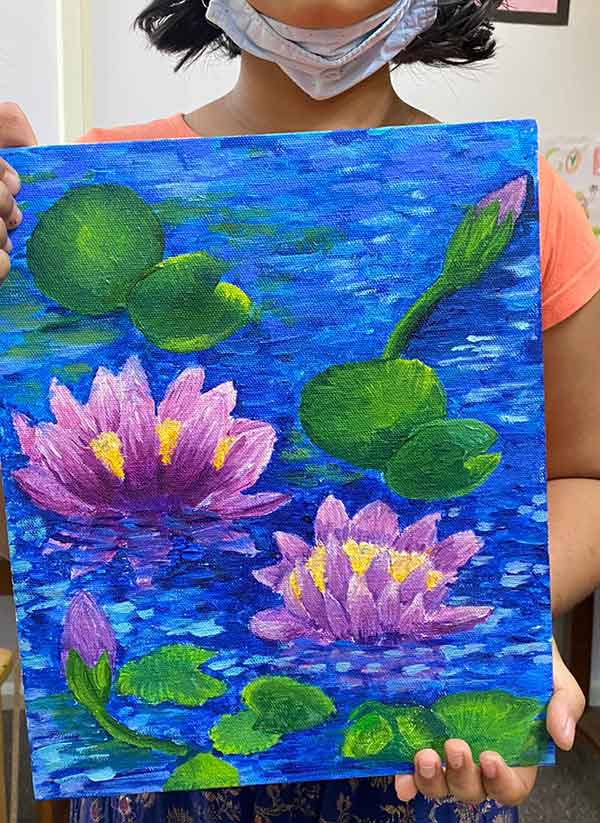
A Focus on Reflection: Inspired by Monet’s Water Scenes
Indeed, one of the major topics addressed in our class is reflection, which was an important theme for Monet throughout his work, not only the Water Lilies series. Monet’s love for water, reflection and light provide children with an interesting subject matter to emulate. We concentrate on explaining to kids how light bounces on water and how colors interact and mix to give dimension.
Learning Techniques from Monet’s Reflections
1. Observation Skills: First, we familiarise the students with Monet’s paintings of ponds, rivers and landscapes. To that end, we stress or the role of noticing colors and light in the world around them. Children get to see how due to the color of the sky, the water color changes and the reflection changes at different times of the day.
2. Brushstroke Techniques: The children should paint fast and use small strokes and the kind of painting that is done often you have to put one color on top of the other so that it will have a sheen to it. This technique gives a reflection seen in Monet’s work in that when painted from a distance, one cannot distinguish the brush marks while close, they are obviously distinguishable.
3. Color Blending: Unlike with acrylics, which are applied on a palette and then mixed to create other colors, kids paint straight on the canvas letting the colors intermingle. This he or she also learns the Impressionist way of adding colors bit by bit in order to get a textured hue.
Outcomes of the Claude Monet Painting Class
By the end of the class, students gain:
• They understand the background of the Impressionist art movement and relate it to works of Claude Monet.
• Basic Painting Skills: Young people strengthen their skills of utilizing color, tools such as brushes, units of layer and learn how to achieve effects of depth of field.
• Appreciation for Light and Reflection: They feel how things seem from another view: they see how reflection transforms perspective and gain understanding of the nature of light as an element in art.
• Creative Confidence: Students leave with a really lovely Monet painting and feeling good about creating their interpretation of what it looked like.
Closing Thoughts on Teaching Claude Monet’s Art of Reflection
Introducing the principles of Claude Monet’s Impressionism in class is more than teaching children about style; it provides a purposeful approach to art education.. They find out that each stroke made leaves an imprint, and the figurative mask captures an instance and point of view. Not only does the child make art in this class, they also learn the transient nature of the lovely and they do not forget that lesson once the paint has dried up.
Exposing children to and relating with them like an Impressionist is one of the greatest joys of being an art teacher. The happiness that everyone gets when they make their “impression” of the world is a confirmation of the importance of art in learning and self-creativity.
This class helps every child to invite a part of Claude Monet’s world into their own painting reflections that contains each child’s voice.

